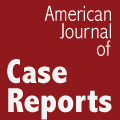Occurrence of virulence genes among Enterococcus faecium strains isolated from patients and hospital environment
Monika Eliza Łysakowska, Andrzej Denys
Med Sci Tech 2010; 51(1): 41-46
ID: 881243
Available online:
Published: 2010-06-01
Background. Enterococci, especially naturally resistant to many antibiotics E. faecium strains, are considered to be a common cause of many infections, mostly in immunocompromised patients. Ability to infect a host depends on the presence of many enterococcal pathogenicity factors enabling enterococci adherence, colonization of host tissues and survival in different host environments, e.g., aggregation substance (AS), cytolysin, gelatinase (GelE), serine protease (SprE), enterococcal surface protein (Esp) and others. The aim of this study was to evaluate the presence of virulence genes among E. faecium strains and to determine possible relationship between their presence, resistance to ampicillin and symptoms. Material and methods. Investigation concerned 52 Enterococcus faecium strains isolated from treatment units in two chosen hospitals in Łódź. Enterococcal strains were identified to species according standard microbiological methods. The presence of virulence genes was tested by PCR and susceptibility to antimicrobial agents was determined by broth microdilution method. Results. Searching for virulence genes revealed common occurrence of surface protein gene (esp) – it was present in 59,6% strains. Gelatinase gene (gelE) and serine protease gene (sprE) were much less frequently found, respectively in 26,9% and in 28,8% strains. Occurrence of many E. faecium strains both resistant to ampicillin and having esp gene confirms higher virulence of these strains and may suggest appearance of epidemic clones in Lodz hospitals.
Keywords: Enterococcus faecium, Virulence genes, Gelatinase, esp



